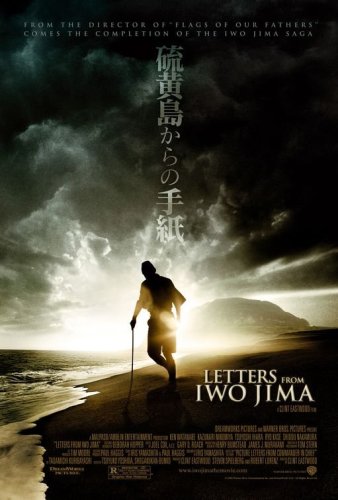| Fecha | Área | Bruto |
|---|---|---|
| 22 April 2007 | USA | USD 13,753,931 |
| 1 April 2007 | USA | USD 13,660,616 |
| 18 March 2007 | USA | USD 13,602,578 |
| 11 March 2007 | USA | USD 13,521,691 |
| 4 March 2007 | USA | USD 13,328,600 |
| 25 February 2007 | USA | USD 12,834,854 |
| 18 February 2007 | USA | USD 11,811,634 |
| 11 February 2007 | USA | USD 9,935,921 |
| 4 February 2007 | USA | USD 7,478,563 |
| 28 January 2007 | USA | USD 5,072,065 |
| 21 January 2007 | USA | USD 2,442,552 |
| 14 January 2007 | USA | USD 958,923 |
| 7 January 2007 | USA | USD 472,372 |
| 31 December 2006 | USA | USD 349,641 |
| 24 December 2006 | USA | USD 162,293 |
| USA | USD 13,756,082 | |
| except USA | Worldwide | USD 54,917,146 |
| Worldwide | USD 68,673,228 | |
| 11 March 2007 | Italy | EUR 581,466 |
| 4 March 2007 | Italy | EUR 489,230 |
| 25 February 2007 | Italy | EUR 373,525 |
| 18 February 2007 | Italy | EUR 161,980 |
| 15 April 2007 | Japan | JPY 5,119,459,790 |
| 4 February 2007 | Japan | JPY 4,789,543,581 |
| 28 January 2007 | Japan | JPY 4,574,398,561 |
| 21 January 2007 | Japan | JPY 4,304,676,923 |
| 14 January 2007 | Japan | JPY 3,977,937,592 |
| 7 January 2007 | Japan | JPY 3,558,561,966 |
| 31 December 2006 | Japan | JPY 2,609,676,867 |
| 24 December 2006 | Japan | JPY 2,075,086,660 |
| 17 December 2006 | Japan | JPY 1,427,575,169 |
| 10 December 2006 | Japan | JPY 496,411,111 |
| 18 February 2007 | Netherlands | EUR 17,200 |
| 18 February 2007 | Spain | EUR 310,260 |
| Fecha | Área | Bruto | Pantalla |
|---|---|---|---|
| 24 December 2006 | USA | USD 122,548 | 5 |
| 18 February 2007 | Italy | EUR 161,980 | 47 |
| 10 December 2006 | Japan | JPY 496,411,111 | 401 |
| 18 February 2007 | Netherlands | EUR 17,200 | 20 |
| 18 February 2007 | Spain | EUR 310,260 | 68 |
| Fecha | Área | Bruto | Pantalla |
|---|---|---|---|
| 22 April 2007 | USA | USD 5,253 | 17 |
| 1 April 2007 | USA | USD 7,458 | 23 |
| 18 March 2007 | USA | USD 34,635 | 86 |
| 11 March 2007 | USA | USD 100,167 | 175 |
| 4 March 2007 | USA | USD 252,345 | 285 |
| 25 February 2007 | USA | USD 707,311 | 530 |
| 18 February 2007 | USA | USD 1,272,397 | 651 |
| 11 February 2007 | USA | USD 1,729,451 | 781 |
| 4 February 2007 | USA | USD 1,696,356 | 720 |
| 28 January 2007 | USA | USD 1,867,326 | 415 |
| 21 January 2007 | USA | USD 1,355,466 | 360 |
| 14 January 2007 | USA | USD 449,962 | 35 |
| 7 January 2007 | USA | USD 79,297 | 5 |
| 31 December 2006 | USA | USD 121,204 | 5 |
| 24 December 2006 | USA | USD 122,548 | 5 |
| 11 March 2007 | Italy | EUR 59,250 | 34 |
| 4 March 2007 | Italy | EUR 67,510 | 40 |
| 25 February 2007 | Italy | EUR 140,134 | 55 |
| 18 February 2007 | Italy | EUR 161,980 | 47 |
| 15 April 2007 | Japan | JPY 265,809 | 1 screen |
| 4 February 2007 | Japan | JPY 55,795,683 | 294 |
| 28 January 2007 | Japan | JPY 101,827,196 | 304 |
| 21 January 2007 | Japan | JPY 133,080,688 | 298 |
| 14 January 2007 | Japan | JPY 151,948,940 | 305 |
| 7 January 2007 | Japan | JPY 251,437,501 | 322 |
| 31 December 2006 | Japan | JPY 169,612,396 | 322 |
| 24 December 2006 | Japan | JPY 305,750,177 | 322 |
| 17 December 2006 | Japan | JPY 370,584,409 | 401 |
| 10 December 2006 | Japan | JPY 496,411,111 | 401 |
| 18 February 2007 | Netherlands | EUR 17,200 | 20 |
| 18 February 2007 | Spain | EUR 310,260 | 68 |










Clint_Eastwood_3.jpg)
